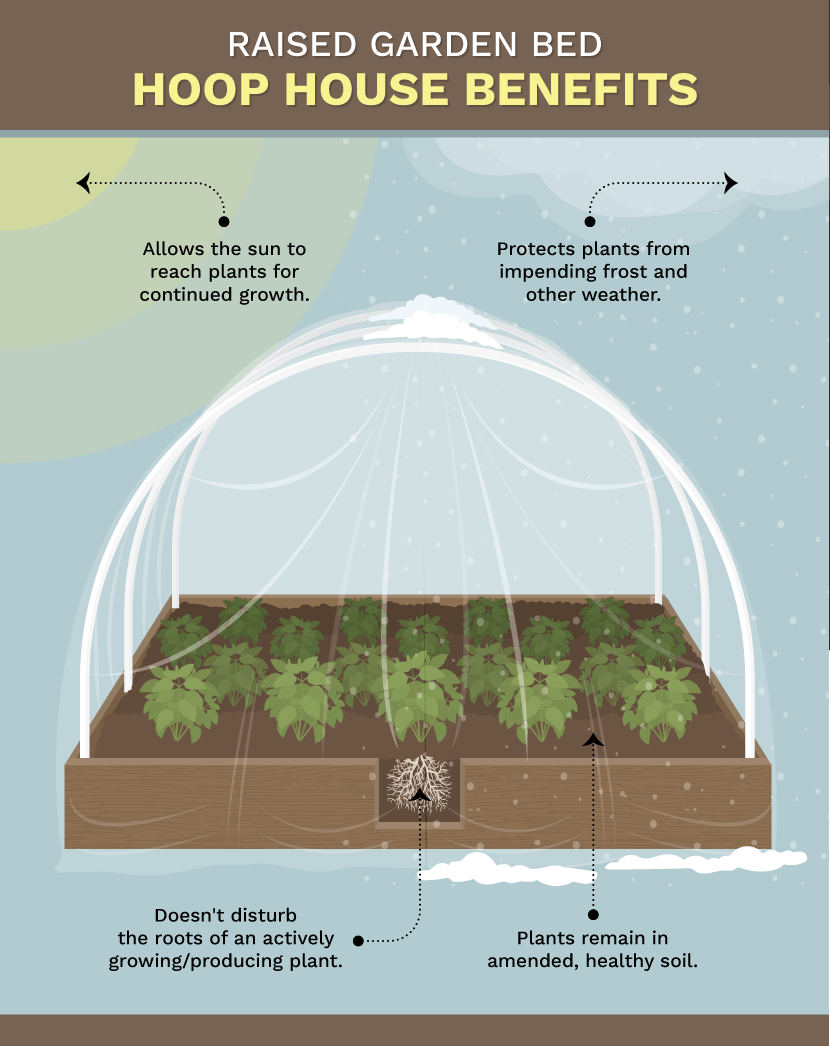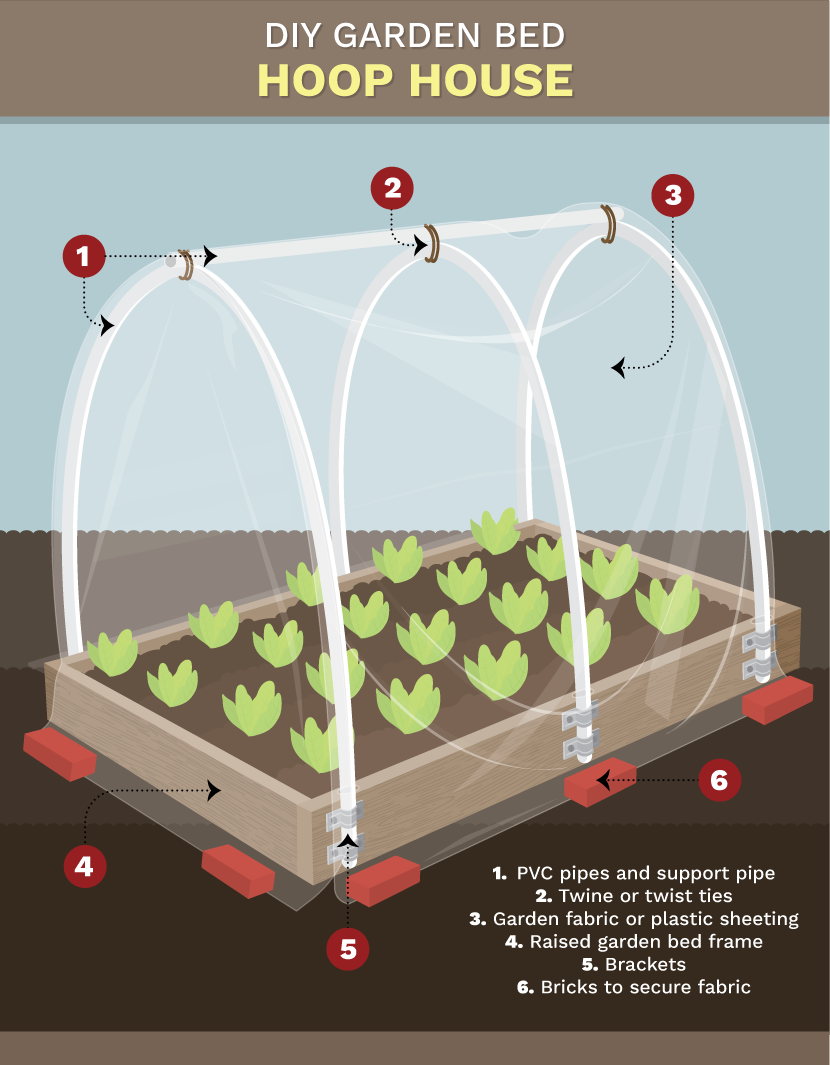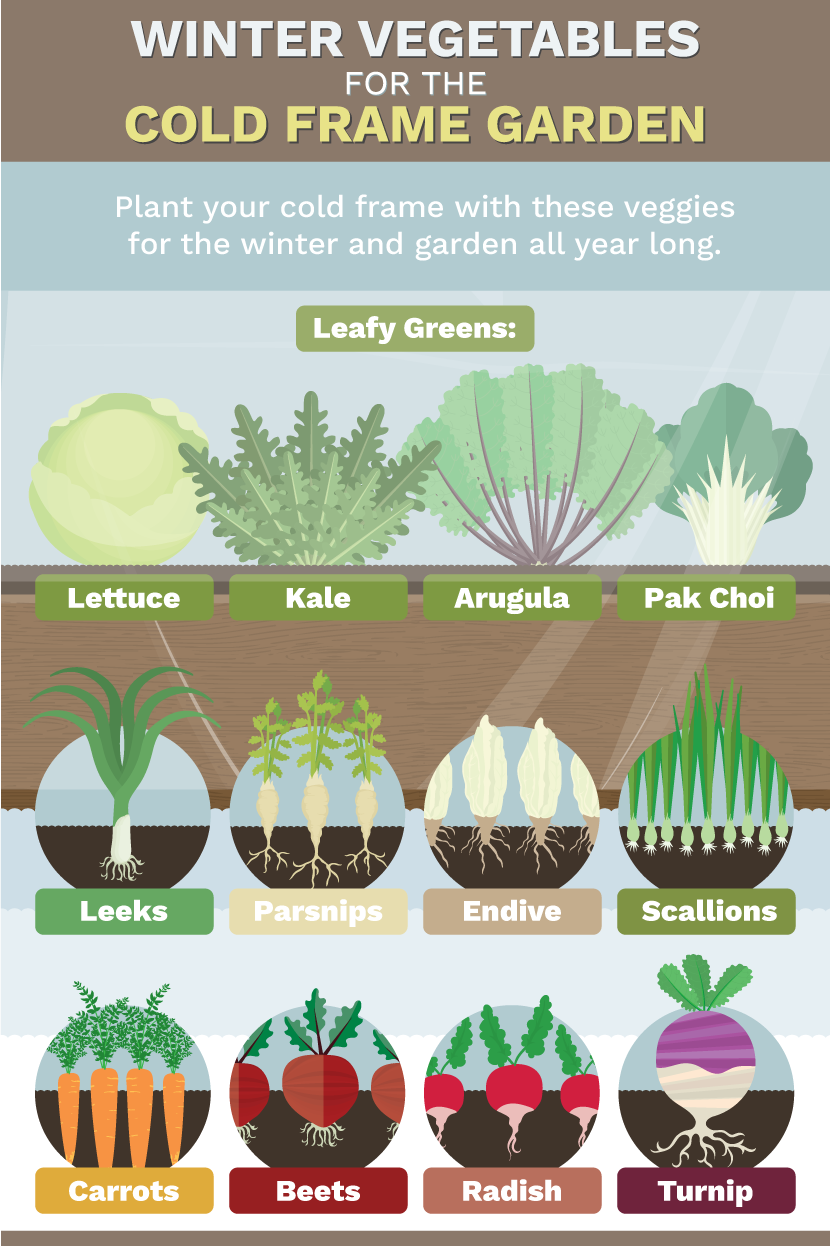Extending Your Growing Season
Hoop Houses, Row Covers, and Cold Frames
Think of hoop houses, row covers, and cold frames as small, unheated greenhouses that can extend growing seasons in either direction; imagine earlier springs and later summers.
These handy enclosures are used by gardeners to harden off indoor-grown seedlings, plant earlier in spring, exclude hungry pests, and create a longer flower or harvest season. In fact, in some climates cold frames and hoop houses allow gardeners to enjoy cool-weather crops all winter long.
Hoop Houses
Hoop houses for the backyard gardener are all the same shape, but can be constructed in a variety of ways, as well as different sizes.

Garden Bed Hoop House
Garden bed hoop houses bring huge benefits to the garden and can be built onto existing raised garden beds using a flexible support such as PVC pipe and thick plastic or garden fabric.
Garden bed hoop houses are so handy that I attach these hoops to most of my garden beds long before I need them. This way, it's a simple task to protect plants quickly when necessary.
If your garden is planted directly into the ground (as opposed to a raised bed with sides), a portable version of this hoop house can be constructed by making a simple rectangular frame in which to attach the hoops.
Greenhouse Hoop House
Another popular hoop house style is one that allows you to stand up inside and work with the plants just like a small greenhouse – without the heat. It is more expensive to build than a garden bed hoop house, but it's also fairly permanent and can offer greater versatility. It's also several thousand times less expensive than purchasing a commercial greenhouse.
For those interested in building this type of hoop house, I suggest seeking out a 6 mil polyethylene material to cover the house. It will hold up longer than an inexpensive generic plastic that you might use for small garden bed hoop houses.

High Tunnels
Commercial hoop houses that are built over extremely large garden beds are referred to as high tunnels. They're extremely tall, strong, and expensive. High tunnels offer more coverage than the average gardener usually needs.
Row Covers
Row covers are handiest as an organic insect control for vegetables just getting their start in the garden. Think of them as extremely short hoop houses that are used to cover a specific vegetable row instead of the entire bed.
To keep hungry insects from devouring young plants, garden fabric or plastic is held up just slightly higher than the plants using heavy gauge wire that's bent into short hoops. Lightweight garden fabric used alone as a plant cover without using wire hoops for support is called a "floating row cover" and is an effective and easy-to-use technique.
In order for any type of row cover to work, the cover should be placed over the plants before the insects show up and the cover material should be held down at the sides with soil or small rocks.
Cold Frames
Cold frames and hoop houses are used in a similar fashion. The names of these structures refer to how they are constructed rather than how they function.
They're typically constructed as a bottomless box style. They have a door (or top) that can be closed or raised open at different levels. A cold frame's sides and lid might be made of glass or covered in a heavy plastic sheeting or garden fabric which allows light inside, while keeping the wind and potential frost at bay.
Harden Off Seedlings
A cold frame is one of the best places to harden off tender seedlings that have started their lives being coddled indoors. At some point these youngsters have to be introduced slowly to the great outdoors that will eventually be their permanent home. The cold frame aids baby plants in this disruptive environmental transition.
In late winter or early spring (depending on the species), place your seedlings in the outdoor cold frame for 2-3 hours in the morning. Then bring them back inside. Repeat this for the next couple of days and then slowly increase the time they are in the cold frame over the next two weeks. At that point the seedlings should be spending the entire day outdoors.
The first time they remain outside overnight should be a night that's frost-free, as it could be too much for them even while protected. But soon afterwards, the young plants will do just fine in the cold frame even through frost.
Cool Weather Vegetable Bed
Cold frames also make a great lettuce bed for fall and winter gardens. In fact, I keep my cold frame lettuce bed going for most of the winter by planting lettuce seeds directly into the soil inside the cold frame during the fall. Come December, I'm harvesting lettuce to go with Christmas dinner.
Other cold-loving vegetables such as cabbage, kale, spinach, green onion, carrots, and radishes can all be grown in a cold frame through the winter months. The low temperatures actually bring out the flavor in many of these vegetables.

Commercially made cold frames are available, but it's a simple task to design your own with recycled items. Be on the lookout for old glass doors and windows at yard sales or flea markets. Cold frames can be created as permanent structures. However, the home gardener most often uses portable versions.
Whether you love vegetables, flowers, herbs, etc., hoop houses, row covers, and cold frames will have you planting earlier and harvesting later than you may have thought possible.
Embed the article on your site

